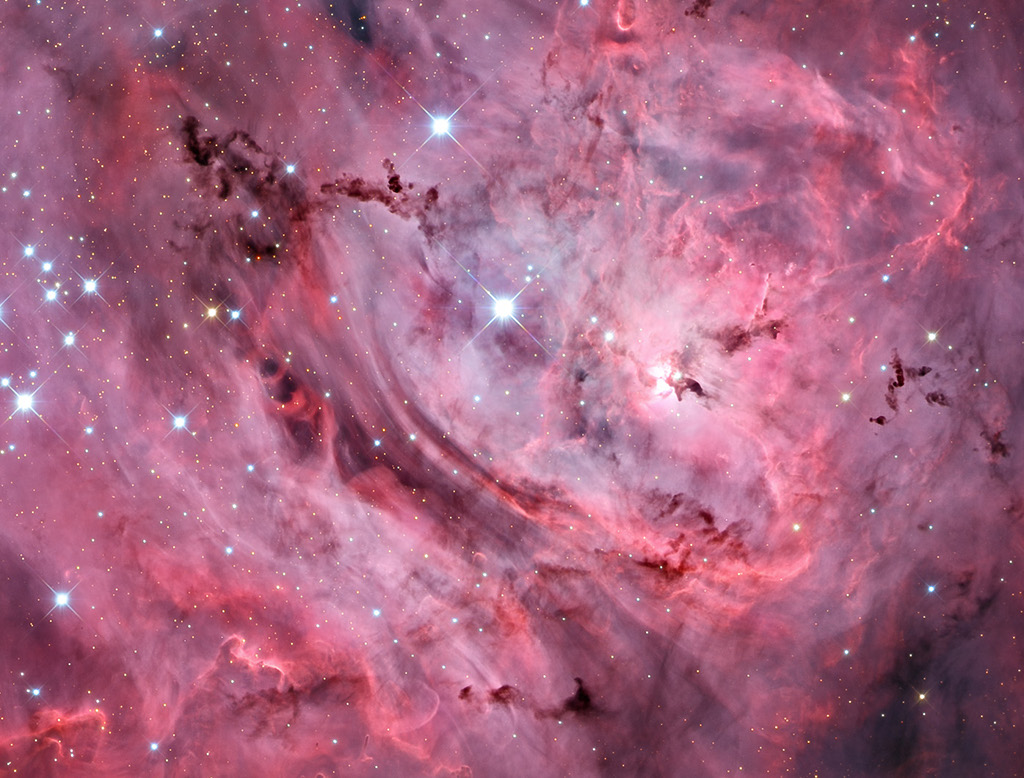
Taken by a 32-inch Schulman Telescope at the University of Arizona’s Mt. Lemmon SkyCenter, the above image displays the Lagoon Nebula – also known as the Messir 8 (M8) – located in the constellation Sagittarius about 40 light-years across and 5,000 light-years in distance.
The Lagoon Nebula was discovered in 1654 by Giovanni Battista Hodierna, an Italian astronomer who classified the object as ‘nebulosa’ in terms of intermediate brightness. It was later noted by British astronomer John Flamsteed in 1680 as a ‘nebula.’
NGC 6530, a loose open star cluster composed of more than 100 known bright members, complements the nebula on the eastern side. The stars are less than five million years old, deeming the cluster young and new according to astronomical standards.
‘Lagoon’ refers to the curving dark channel that cuts down the middle of the nebula, dividing it in half. In addition, the M8 shows a ton of detail in smaller telescopes. As shown above, there are numerous small dust clouds scattered within the bright background itself. We see moderately brighter knots of nebulosity too, making this a favorite for beginner astronomers.
The Lagoon Nebula is said to be an emission of ionized hydrogen atoms recombining with stripped electrons and the hourglass figure near the center of the photo is ionized gas created by radiation and stellar winds from a young, colossal star.
In the future, the bright ridges and streaks of glowing gas here will eventually form new stars, which will capture more gas and dust to form their own solar systems.
Source: Gizmodo
Advertisement
Learn more about Electronic Products Magazine





